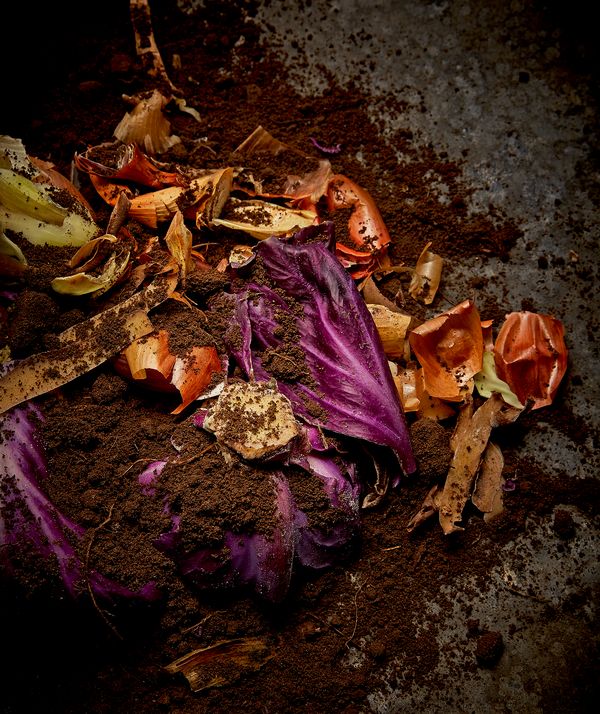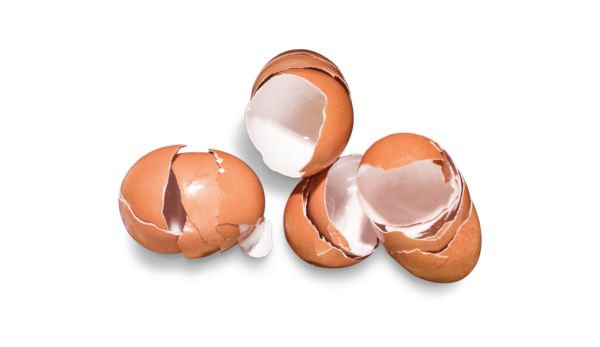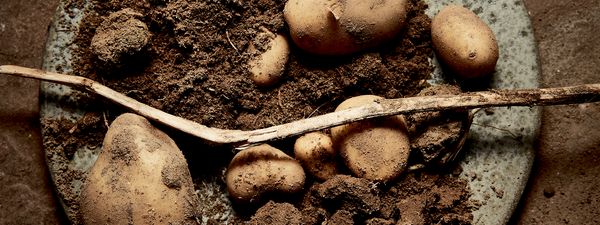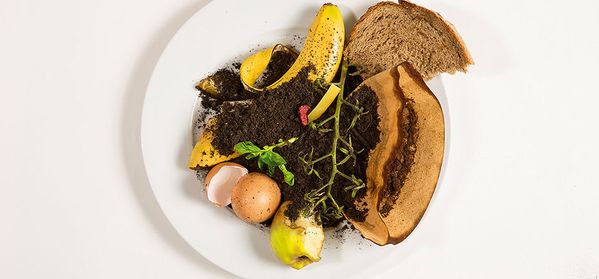While the leftovers are fermenting away in the bucket, I sow grasses on my palette fields. It’s really rather easy: all I do is buy flower seeds and some bird feed, cover the soil in it, and wait. While some of the seeds and grains get eaten, even the hungriest of avian visitors can’t manage them all, and so the result is a grassy meadow of flowers; I don’t water it all too often so that the roots get longer, making the plants more resistant to dry periods and better able to absorb nutrients and minerals.

“MAKING YOUR OWN SOIL” MAY SOUND CRAZY – BUT YOU CAN NEVER HAVE TOO MUCH HUMUS. WHAT IS MORE, MAKING SOIL MAKES YOU FEEL GOOD, TOO.
Japanese organisms
Maybe it's because my coffee comes from the Andes, was grown organically and traded fairly? After all, there must be a reason the filters filled with used coffee grounds react so well with the Japanese microorganisms I add to my compost. Yes, that is what I am doing here: making my own soil. The result is bound to be rich in silts and yet easy to dig, not to mention strongly water-absorbent. I’ve got a big balcony which I use to produce soil.

Like kimchi
My compost heap is composed of my own food waste; I eat a lot of fruit and vegetables. Once I’ve chopped and mashed it, I spray it with microorganisms so that it starts to ferment. It’s the same principle behind making sauerkraut or kimchi.
Bokashi bin
This fermentation phase takes between four and six weeks and happens in the airtight plastic container I ordered from Japan with the microorganisms: it’s called a Bokashi bin. Researching it before buying, I found out that the Japanese came across the effects of fermentation by chance: in 1982, a professor was trying to increase soil fertility on a group of islands between Japan and Taiwan and noticed that grass grew better if he added a specific mixture of lactic acid, yeast and photosynthetic bacteria to the compost heap.
Sour smells
At the bottom of the bucket, there’s a sieve floor so that the liquid formed during the fermentation can run off, and this liquid has a horrible sour smell. Apart from that, however, the whole process is odour-neutral, and the run-off also doubles up as a handy drain cleaner that can eat its way through blocked pipes, so I’m happy to put up with the pong.
Feed the birds

Prussian crawlers
Once the food waste has thoroughly fermented, the result is a grey mass. After a few weeks, I dig the meadow over, mix in the compost – and leave nature to do the rest. My balcony has a pretty continental microclimate, and the air in Hamburg is generally humid. I’ve also bought a few earthworms from a supplier in Brandenburg: you can make soil without worms, of course, but these Prussian crawlers speed up the decomposition of compost into genuine humus by quite some margin – and I like there to be life in the fields.
Waste not, want not
So making humus takes months, not weeks; it takes me a whole summer to get real black earth on my balcony. The downside to using worms is that, in cold winters, you have to put a cover over the heap so that they don’t freeze to death. It’s also worth noting that keeping worms is not like having a dog: in fact, most people who find out that I make humus think that I must be nuts. I do it because “waste not, want not” was a key part of my upbringing and I’m lazy. Yes, too lazy to carry my food waste container down to the bins in the courtyard.

Soil saver
Besides, making humus on my balcony makes me feel good. In our age of industrial agriculture and gigantic monocultures, we’re losing fertile soil at a faster rate than ever before. The amount of soil lost by erosion since 1945 is equivalent to the area of China and India put together, while natural conditions can only replace around one centimetre of earth – every century.
Crafted humus
So I would be well within my rights to claim that I am, by making soil, doing my bit for the survival of humanity. I could turn it into a trendy start-up: top-quality, all-organic “Crafted Humus”, produced without digging up peat or draining wetlands, sold in nice little jars finished with a colourful ribbon. Yes, I can see it now: just the thing for urban hipsters. All I need to do is find a nice little farmers’ market in a thoroughly gentrified part of town.


